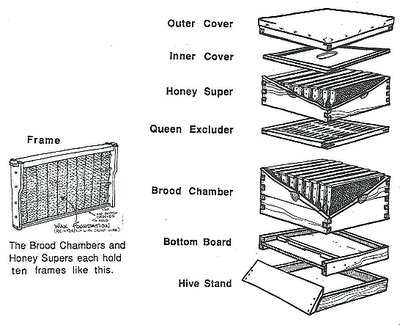Screen Bottom Boards
In today's post, I'll be elaborating on the screen bottom board I mentioned previously.
As I have said before, a normal bottom board functions as a base for the hive to keep it off of the ground, and looks like this:

A screen bottom board is basically the same thing, except there is a hole cut in the middle of it, and a screen stapled over that hole. This is what a completed sreen bottom board looks like:

The major advantages to having a screen bottom board are improved ventilation, and defense against the Varroa Mite.
The Varroa Mite (also called Varroa Destructor) is one of the major pests to modern beekeepers. Mites suck the "blood" of adult bees, leaving open wounds which makes the afflicted bees more prone to infection. The Varroa Mite reproduces on a 10 day cycle. In the first stage, the female mite enters a honey bee brood cell, once the cell is capped, the mite lays eggs on the bee larva. The mite eggs hatch around the same time that the young bee emerges, the young mites leave the cell with the host bee, and then spread to other bees and cells.
Labels: bottom board, screen bottom board, varroa mite




